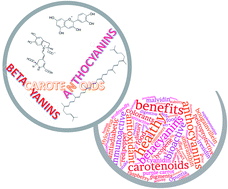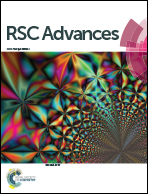New insights into red plant pigments: more than just natural colorants
Abstract
Pigments make nature both colorful and attractive. Humans have always incorporated the natural pigments of fruits, vegetables and spices into their dietary requirements. Naturally occurring red pigments in plants are carotenoids, anthocyanins and betacyanins. Natural pigments, apart from colour, provide added properties and are therefore considered to be bioactive constituents. Red natural colorants are one of the most widely used in the food industry. The interest in these pigments lies in the enhancement of the healthy effects of the diet. In this context, attention is given to carotenoids, anthocyanins and betacyanins, with emphasis on the basic chemical and biochemical attributes and wide-ranging health-promoting benefits of these pigments. Thus, in this review, we systematically present the advantages and limitations of these natural pigments as food colorants in relation to their physico-chemical properties, reactivity and bioactivity.

- This article is part of the themed collection: 2020 Reviews in RSC Advances


 Please wait while we load your content...
Please wait while we load your content...